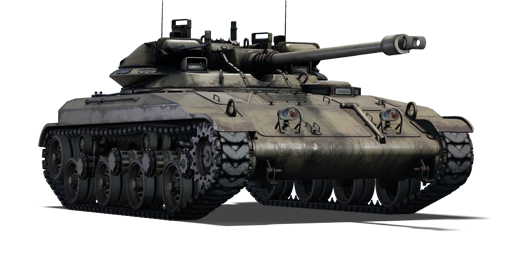Despite the M41 Walker Bulldog's acceptance in 1951, it did not meet all of the US Army's requirements. As such, research and development of the M41's successor started nearly immediately. Among the designs trialed was one by Aircraft Armaments, Incorporated (AAI), whose design was approved to continue in March 1954 as the 76 mm Gun Tank T92. By January 1956, the T92 had beaten its competitors and proceeded as the potential light tank replacement of the M41. However, the T92's future as the new light tank was halted in 1957 when the US Congress asked if the T92 could be made to be amphibious, in response to the discovery that the Soviets were issuing their own amphibious light tank. When it is revealed that the T92 could not be made amphibious, the design was ordered to be cancelled to focus on development of an amphibious light tank.
The T92, introduced in Update 1.53 "Firestorm", is much smaller than the preceding M41A1 tank. This presents a much smaller target for the enemy to find and hit. Though the T92 shares the same calibre as the M41A1, the T92 benefits with the M496 HEATFS round, which while it does not allow the T92 to penetrate as much as the shared M331A2 APDS round, it does give the T92 a better multi-purpose shell to use against both heavy and light armoured vehicles. There's nothing much to write home about the armour as a light tank, though the placement of crew and ammunition towards the rear of the tank could mean better survivability as any incoming shells from the front would have to pass through other components first before directly hitting the critical spots. The T92 can give light tank players a better edge in the fight over the M41A1.















